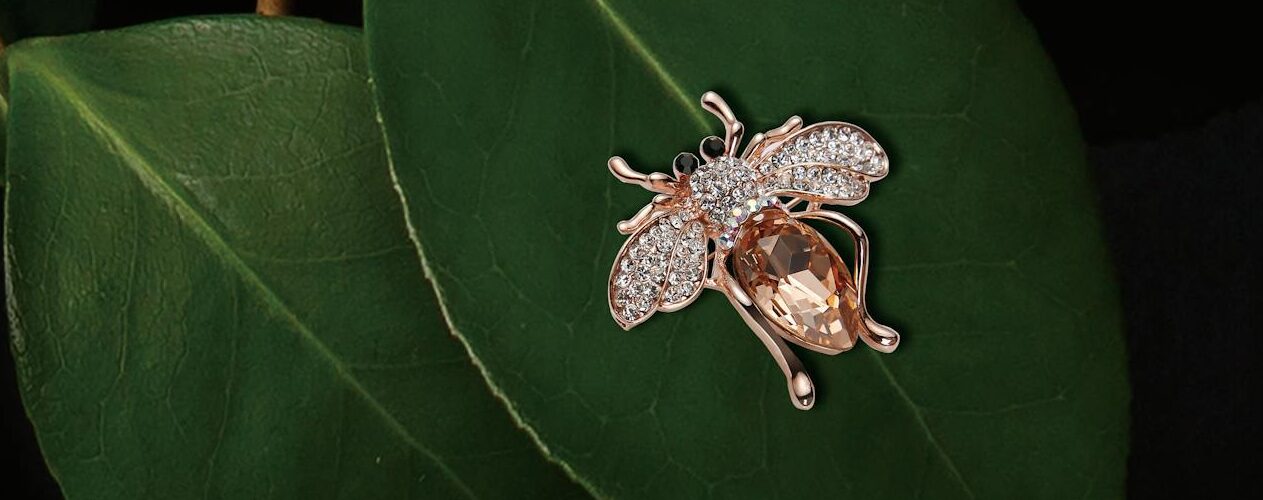Diamonds, long-admired symbols of luxury and love, are now facing a sustainability challenge.
As consumers become more conscious of their environmental and ethical impact, lab-grown diamonds have emerged as a compelling alternative to mined diamonds. Nowadays, individuals are considering lab-grown diamonds, highlighting a shift in consumer preferences.
This growing popularity has ignited a debate within the jewellery industry– are lab-grown diamonds the sustainable future, or do mined diamonds still hold value?
Difference between Natural Diamonds and Lab-Grown Diamonds
Natural Diamonds
Natural diamonds are formed deep within the Earth’s mantle under intense heat and pressure.
Carbon-rich materials, such as organic matter or carbon dioxide, are subjected to temperatures exceeding 2200 degrees Fahrenheit and immense pressure over millions of years. These extreme conditions cause carbon atoms to rearrange into a highly ordered crystalline structure, forming diamond crystals.
Volcanic eruptions or geological processes can bring these diamonds closer to the Earth’s surface, where they can eventually be mined. The process takes billions of years, making natural diamonds incredibly rare and valuable.
Lab-Grown Diamonds
On the other hand, lab diamonds or synthetic diamonds offer a sustainable alternative to natural diamonds.
As the name suggests, these diamonds are created in controlled laboratory environments, using two primary methods – Chemical Vapor Deposition (CVD) and High Pressure High Temperature (HPHT).
In the CVD process, a diamond seed is placed in a carbon-rich gas environment, and energy is applied to break down the gasses. Carbon atoms then deposit onto the seed, layer by layer, forming a larger diamond crystal.
The HPHT method involves subjecting a diamond seed to immense pressure and high temperature, mimicking the conditions found deep within the Earth.
Both CVD and HPHT methods result in diamonds with the same chemical composition, hardness, brilliance, and durability as natural diamonds, making them visually indistinguishable to the untrained eye.
What Makes Lab-Grown Diamonds Eco-friendly
Natural diamonds can only be extracted from the Earth’s crust through mining, and as the demand for diamonds continues to rise, the concerns regarding the mining industry become increasingly questionable.
The mined diamond industry has faced increasing scrutiny due to its significant environmental and social impact. Unregulated mining practices in many countries have led to widespread deforestation, soil erosion, water pollution, and substantial carbon emissions.
In contrast, lab-grown diamonds offer a sustainable alternative with minimal environmental impact, reduced waste, and regulated disposal processes. Unlike mined diamonds, which take billions of years to form, lab-grown diamonds can be produced quickly and efficiently, meeting the growing demand without harming the planet.
Let us see some advantages of lab-grown diamonds over mined diamonds.
Eliminating the Need for Mining
Unlike mined diamonds, lab-grown diamonds are created in controlled laboratory environments, eliminating the need for destructive mining practices.
To extract a single one-carat diamond, miners often excavate over 1750 tons of earth, causing irreversible damage to the environment. While some mining companies attempt to rehabilitate the land, it is nearly impossible to restore it to its original state.
Sometimes, the land required for mining the diamonds requires displacement of local and indigenous communities, which impacts lives and livelihoods.
Conserves Nature and Biodiversity
The extractive nature of mining often leads to the destruction of land, deforestation, and damage to local flora and fauna, whereas the production of lab-grown diamonds has no negative impact on the natural environment.
Additionally, unregulated mining often leads to the accumulation of waste materials and causes water and air pollution which further disrupt the natural ecosystem. In contrast, lab-grown diamonds are produced sustainably, with minimal environmental impact and no harm to the planet.
Minimal Waste Generation
Produced in controlled laboratory settings, lab diamonds generate minimal waste, which is then recycled and disposed of responsibly. The energy consumption and emissions associated with their production are negligible.
In contrast, mined diamonds often involve harmful practices that pollute the air and water. Chemical substances released during mining contaminate water bodies and contribute to air pollution. Additionally, the energy-intensive mining process releases greenhouse gasses and other environmental issues.
Reduction in the Use of Fossil Fuels
Lab-grown diamonds are produced through a precise process that involves placing diamond seeds in carbon-rich chambers and applying heat and pressure. This method, if powered by renewable energy sources, allows for the creation of synthetic diamonds with minimal environmental impact.
On the other hand, mined diamonds necessitate significant energy consumption, primarily from fossil fuels used for mining, leading to substantial greenhouse gas emissions.
Better Regulation and Controls
The mining of diamonds happens in remote locations which often escapes administrative scrutiny and strict controls, resulting in environmental and social issues.
Lab-made diamonds can be produced out of buildings in cities or locations which are far more accessible to government authorities. This helps the administration to monitor, control and regulate the lab diamond industry, including imposing environment-friendly practices.
Provide Green Jobs
Though traditional mining creates employment opportunities, it often comes at the cost of human rights abuse, and poor working conditions.
The lab-grown diamond industry can provide opportunities for the creation of green jobs with much better working conditions.
Wrapping Up
As the world becomes increasingly conscious of its environmental impact and makes the transition to a sustainable lifestyle, the transformation in the diamond industry is also due.
Lab-grown diamonds have become popular among today’s environmentally conscious consumers. They eliminate the ethical concerns surrounding mining and environmental degradation, ensuring consumers can make a sustainable choice.
While mined diamonds may hold sentimental value for some, laboratory diamonds offer a compelling proposition for those seeking a more sustainable and ethical option. They possess the same physical and optical properties as mined diamonds, making them indistinguishable to the naked eye. Additionally, diamonds made in factories are cheaper than mined diamonds.
As technology continues to advance, lab-grown diamonds will become increasingly affordable and accessible, making them a viable choice for a wider range of consumers.
Ultimately, the future of the diamond industry lies in a balance between tradition and innovation. While mined diamonds may retain their allure for some, lab-grown diamonds offer a promising path towards a more sustainable and ethical future. Consumers can enjoy the beauty and luxury of diamonds without compromising their values.






Add comment